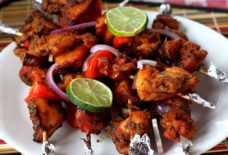5 Greek and Levantine Dishes That Are Very Similar
Courtesy of SBSBy: Emily Tain/Arab America Contributing Writer
Despite being made up of a myriad of different countries, the Mediterranean has historically been a hub for cultural diffusion. The ancient entanglement of Egypt, Rome, and Greece is an obvious display of this diffusion, yet many forget about the Middle East and North Africa when talking about similarities and differences within the Mediterranean. One way in which these cultures bear resemblance to one another is through food. By looking at culinary staples in Greek and Levantine food, one can see similarities that reflect a mild but present pan-Mediterranean diet.
Here are five Greek and Levantine dishes that are very similar!
Baklava/Baqlawa
Courtesy of Tina KazarianStarting out this list is my favorite dessert, baklava. The Greek name is μπακλαβα, pronounced “baklava,” while the Arabic name is بقلاوة, pronounced “baqlawa.” Both dishes consist of layered pastry with nuts and phyllo dough. However, the Greeks use honey as a sweetener while Arabs use a simple syrup. In either case, the treat is a Mediterranean staple and can be found at most Arab and Greek restaurants.
Gyro/Shwarma
Courtesy of MashedMispronounced by many comes the gyro/shawarma. Unlike baklava, their names are more distinct from one another: γυρος, pronounced more like “yeeros,” versus شاورما, pronounced like shawarma. In both cases, it is a pita sandwich filled with meat and other toppings. The biggest difference is the meat and its preparation. The Greeks first season the meat with spices and then slice it, like in the image above. Arabs marinate their meat instead of using spices, and rather than slicing it, they shred the meat.
Pita
Courtesy of Life of ManaliThough it sometimes goes by other names, pita is a staple in both Greek and Arab cuisine. The actual word for bread is different in both languages. In Greek, bread is ψομí, pronounced “psomi” and in Arabic, bread is خبز, pronounced khobz. Pita’s use is almost endless, as it can be used for wraps, dipping, and even dessert dishes.
Moussaka and Maghmour
Courtesy of The Mountain KitchenMoussaka and maghmour are dishes that revolve around eggplant and spices. While moussaka is the Greek version of the dish, the word is actually Arabic in origin. Though the two dishes contain similar ingredients, their end results are quite different. Μουσακας, pronounced “mousakas,” is a casserole dish that layers eggplant, meat, tomatoes, onion, and custard and can be served hot or cold. مغمور, pronounced “maghmour,” utilizes eggplant, tomato, and onion with chickpeas in a stew-like meal.
Grape Leaves
Courtesy of The Mediterranean DishStuffed grape leaves are another Mediterranean staple. The Greek δολμας, pronounced “dolmas,” often feature seasoned rice and minced meat, and sometimes are wrapped in cabbage leaves instead of grape leaves. They are usually coated in olive oil, which is especially important for nutrition when eating the vegetarian version. The Arab ورق عنب, pronounced “waraq enab,” has a very similar composition but tends to use less olive oil.
Dishes can vary in preparation and ingredients within one country, so it would be incorrect to say that these foods are the same. One thing that Greek and Arab foods definitely have in common, however, is the ability to bring people together, honor heritage, and share some of the best parts of each culture with the rest of the world.
Check out Arab America’s blog here!








